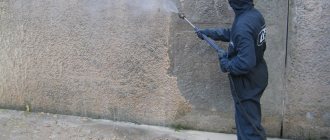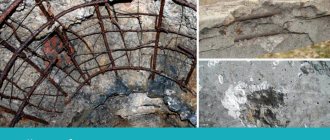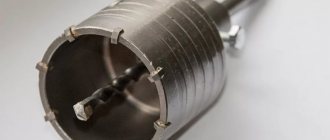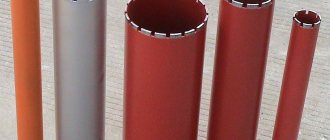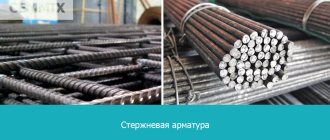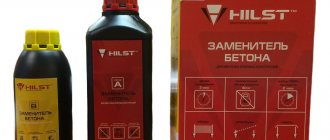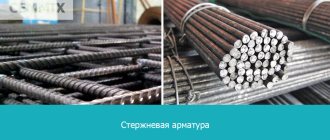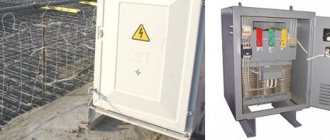Damage to concrete foundations by fungus and mold is a fairly common and very dangerous phenomenon. If you notice dark or black spots on surfaces, you must urgently take appropriate measures - use an antiseptic for concrete and treat the affected areas.
After all, the appearance of microorganisms on the walls can not only completely destroy the material and deprive it of its operational properties, but also cause the appearance of various respiratory diseases, allergic reactions, asthma and other health problems.
To combat microorganisms, modern manufacturers offer a lot of different means, which must be selected in accordance with the specific problem, the characteristics of the operation of the room, the building materials used in the construction of the structure, etc.
Specifics of concrete
Concrete is a material that is quite susceptible to the effects of various biodestroyers, which act like toxins and chemicals, destroying the structure of the structure from the inside and outside. Spores easily attach to the base, multiply and develop on it, and penetrate inside the structure. Contaminated concrete is difficult to process and is dangerous for people. And ordinary cleaning of the top layer is not enough here - if infection has already occurred, you need to urgently use special means.
The main factors contributing to infection:
- High humidity levels
- Unheated building with average temperature (no severe frost or heat)
- Rooms where wet things are regularly dried
- Plumbing that is incorrectly installed or has become unusable, resulting in regular leaks
- A large number of indoor plants that increase air humidity
- Lack of ventilation system in bathrooms
- Volumetric furniture located too close to the walls
To avoid problems, concrete impregnation should be carried out during the installation and operation of structures.
Need for use
It is advisable to use an antiseptic for concrete against mold and other parasites before finishing work begins. The fungus multiplies quickly when there is a high accumulation of moisture, an air temperature of +20-26 C, and insufficient ventilation. Therefore, as a preventive measure, it is necessary to protect at least toilets, bathrooms, verandas, etc. Then it will be more difficult to remove mold indoors.
The main factors for the presence of infection:
- Colored spots on damp lesions
- Destruction of the finish: plaster falls off, paint crumbles, wallpaper falls off (inside)
- Rapid destruction of building cladding (outside)
- Characteristic smell of rot
The most dangerous stage for humans is the stage of the spread of microorganisms, when an obvious aroma appears and black spots are already noticeable on surfaces. In this case, you need to act quickly, while the fungus can still be removed and the spores have not scattered and begun to affect internal organs.
Causes of fungus on concrete
To prevent further spread of the fungus and prevent its appearance in other rooms, you should know the causes of mold:
- An inefficient heating system leading to high humidity – a favorable environment for fungus.
- Insufficient air exchange or lack of ventilation, which additionally allows fungal spores to spread throughout the room.
- Insufficient thermal insulation of the building from the outside.
- Poor quality waterproofing of installation joints and building foundations.
- Laundry is drying in the room.
- The presence of indoor plants in large quantities.
Types of antiseptics
An antiseptic for concrete against fungus must be chosen very carefully. Many chemicals are highly toxic, while organic products may not demonstrate the desired effectiveness in the fight. Depending on the problem and operating characteristics, one type of means is selected.
The entire variety of impregnation mixtures can be divided into 2 main groups: for treatment at the stage of installation of structures and those that are used to treat already infected areas and prevent their further spread. Also, the preparations can be used in different ways: used for surface impregnation and deep penetration (optimally 50 centimeters), introduced into primer solutions for floors, ceilings, walls, or into concrete mixtures in the form of antiseptic additives.
Main types of impregnations by composition:
Water soluble
Solutions of water-based mineral salts penetrate the material well, but destroy metal reinforcement, so they are not used on the surface of iron and steel. The substance is easily washed out and serves most effectively as an additive added to plaster and concrete mortars. The drugs are used to protect internal surfaces and are an effective safe alternative to other types of products.
Previously, copper sulfate was used to treat concrete surfaces, which does not burn and does not stink. Sold in the form of a blue powder, diluted with water in a ratio of 1:100, used for repeated processing (3-4 times). They also use sodium fluoride with lime, sodium fluoride (dangerous, must be mixed with alabaster, cement, plaster, diluted with water), and alabaster.
Organic
Suitable for any base (artificial stone, concrete, brick, ceramic tiles), toxic, require the use of personal protective equipment, do not destroy steel reinforcement, quickly (within 1-2 impregnations) destroy even the most active and highly multiplied microorganisms and retain many properties years. Not used in residential premises, only in garages, basements, technical buildings.
Oily
They are not washed out of the structure of the material, are used for non-residential rooms and outdoor work, are toxic to the point of poisoning, leave dark stains and have an unpleasant aroma. You won’t be able to paint the wall afterwards; the downside is that it’s flammable. The most popular products: carbolineum, phenol, creosote.
Combined
They are made up of several ingredients and are supplied in the format of concentrated mixtures for subsequent dilution with water for prevention and use in concentrated form for the treatment of infections.
Name, consumption, packaging volume, average price of popular antiseptics
| Name | Consumption rate | Packing | Price |
| Ceresit ST-99, concentrate | 80-90 g/m2 aqueous solution of concentrate in a ratio of 1:2-1:5 | 1 liter | 360 rubles |
| Kapatox | 50 – 100 ml/m2 | 5 liters, plastic canister | 1,200 rubles |
| Nortex disinfectant for concrete | 80-160 g/m2 depending on the degree of surface damage | 21 kg, plastic canister | 4,700 rubles |
| Gambit Antiseptic N-5, concentrate | 0.3-0.5 liters per 1 m2 of an aqueous solution of concentrate in 10 liters of water | 1 kg, plastic jar | 4,500 rubles |
Review of popular tools
1. Water-soluble - “Gambit” is considered the best. Water-soluble dry antiseptic of deep penetration for concrete, which reliably protects against biological parasites. Its properties are not inferior to the most powerful combined agents, but less toxic. You can also use: NORTEX-Doctor, Opti-bio 1, 2,3 (prevention).
2. Organic – the most effective disinfectant is “Nortex”; it is used in heavily contaminated areas. It protects surfaces, penetrates the structure of the monolith and creates a barrier there, preventing further infection by any bioparasites. The preparations Fongifluid Alpa (ALPA), Lakra Antimold, Mavix Bio in tandem with an organosilicon water repellent are often used in construction.
3. Oily – Belinka, Neomid and others have proven themselves to be effective in protecting external structures (roofs, facades, etc.).
4. Combined – one of the most powerful “Ceresit CT-99”. It can be applied to painted or plastered walls and concrete bases. The combination of drug ingredients kills bacteria, mold, fungi, lichen, moss, and prevents spores from germinating, providing the longest possible protection. Also used: a universal remedy for the complete elimination of fungal colonies “Anti-mold”, a universal preparation Dali, a Macrosept palette.
There are many compositions of impregnation brands. The most popular are Tiprom, Mipor, Nortex, Belinka, Ceresit, Kapatoks, Teknos Rensa Homepesuliuos, PUFAS Glutoclean. Before making a decision, it is advisable to take into account certain features of choosing a drug.
How to choose a mixture - what to consider:
- Area of application – inside or outside.
- Type of room - organic solvents are chosen for technical ones, combined and aqueous ones for residential ones. There are products created for use in wet rooms - saunas, swimming pools, bathrooms.
- The task is prevention or control of already emerging microorganisms.
- Duration of exposure, number of treatments - for outdoor work they choose toxic products that only need to be applied once and provide a long-lasting effect; for residential premises, safety is a priority, even if after the first application several more layers will need to be applied.
- The base of the preparation affects the ability to subsequently finish the surface: for example, oil solutions are not covered with anything, so they are suitable only for technical buildings.
How to make a choice
First of all, you need to carefully read the instructions. Please note the main points:
- Area of application of antiseptic preparations (external walls, internal premises);
- The basis of the drug (oil solutions cannot be covered with finishing);
- Time of use (treat existing colonies or prevent their appearance);
- Service life of the drug.
For technical premises, it is better to choose compositions based on organic solvents - they do not add aesthetics, but they reliably protect against relapses and remove the most complex and dangerous types of parasites.
How to treat walls in living rooms: water-based or combined antiseptics. They are non-toxic and odorless. There are products designed specifically for use in wet areas - bathrooms, swimming pools and saunas.
Surface treatment
Preliminary protection
This is done before mold appears after installation or during finishing. The concentrate must be diluted in the required proportions and applied to the concrete base with a brush, roller or spray, carefully soaking every centimeter. Then wait the time specified in the instructions and repeat the procedure one more time.
When treating, it is advisable to first carry out a series of preparatory work: determine the cause of the infection, carefully remove the fungal coating with a metal brush, dry it, treat it with an antiseptic and then a water-repellent composition. In rare cases, the drug is applied directly to the colonies and this is always indicated in the instructions.
It is advisable to treat not only the affected part, but all nearby areas, even neighboring rooms. After all, there is a possibility that the spores have spread over large areas and will begin to multiply in other places in the future.
Combination
For better results, you can use products that are mixed with plasters and primers. In this case, it is possible to carry out finishing simultaneously with processing (one process), and the protection will be more effective, since it will affect not only the surfaces, but the materials themselves.
Safety
All work should be carried out in compliance with protective measures, especially when it comes to treatment using very toxic substances. Goggles, respirator, gloves are required. You also need to take care of a work uniform or a plastic raincoat, which can then be washed at high temperatures. This will prevent spores from getting into the respiratory tract and mucous membranes. It is not recommended to clean clothes, because in this way the fungi can spread to other rooms, objects, skin, etc.
How to prevent infection:
- Add disinfectants to building materials, use combined products to immediately eliminate even the possibility of the appearance of microorganisms: usually this is 6 kilograms per 10 square meters of plaster, cement, concrete composition
- Provide buildings with proper ventilation and prevent stagnation of moisture and air
- Treat the interior regularly with special products
- In case of high humidity, carry out work immediately after the damp areas darken, without waiting for the spread of colonies
- Protect structures periodically: once every 15 years, go through all unheated rooms, once every 7-8 years, pay attention to facades, once every 30 years, treat the walls of buildings that are protected by hinged ventilated facades
Features of application
Figure 2. Using an antiseptic for concrete
All antiseptics for concrete are toxic. They cause significant harm to the human body. To prevent negative consequences, it is recommended to use protective equipment. It is very important that the composition does not get on the skin, mucous membranes or eyes. As soon as the treatment is completed, the room should be thoroughly ventilated.
If your wall is already covered in mold, you need to start treating it as soon as possible. Keep in mind that not every strong antiseptic will do the job here. To truly get rid of mold, you should do the following:
- Determine the type of mold.
- Remove the fungus mechanically.
- Dry the surface.
- Carry out antiseptic treatment.
- Apply a water-repellent compound to the concrete.
Keep in mind that the antiseptic needs to be applied to the entire wall - not just to the infected surface. We strongly recommend treating the entire room with the composition, as fungal spores spread rapidly. To prevent re-infection, the following rules should be considered:
- Carry out antiseptic treatment regularly.
- At the first sign of mold, treatment should begin immediately.
- If the room is heated, then 1 treatment is enough.
To achieve the best protection, you can add antiseptic compounds to cement, plaster, and concrete at the mixing stage. Impregnations do not change the chemical and operational properties of these compounds.
Cleaning indoor walls
For work, solutions are used that have the necessary properties for specific operating conditions, materials, and the room itself. To protect a wall in a dry, unheated basement you will need one antiseptic, for a bathroom in an apartment - a completely different one. Typically, water-based anti-fungus and mold primers are used for interior work.
Stages of the procedure:
- Moisten the affected areas to prevent the spores from spreading further.
- Clean the floor, walls and ceiling with a spatula or sandpaper, or a metal brush, going well beyond the damage. Throw away all the finishing without trying to erase (from wallpaper, for example) microorganisms.
- Saturate the surface with a disinfectant, let it dry for the required time, and reapply a layer. In difficult cases, apply periodically up to 5 times.
- Perform a clean finish.
External wall treatment
This type of work should be trusted only to effective products with the most powerful effects and hydrophobic properties. Therefore, you should think about safety in advance by preparing a protective suit, goggles, gloves, and a respirator.
First, stains are mechanically removed from the surface, everything damaged by mold is removed, then the most concentrated solution is generously applied. It will not remove pores embedded in concrete, but will suppress them. Then you need to apply another layer. The top can be covered with finishing materials, which must contain a directional disinfectant.
Review of antiseptics for artificial stone
All modern anti-mold preparations for concrete belong to the bactericidal class. Disinfecting compounds are designed to destroy mycelium and comb cells, preventing them from multiplying. Supplied in the format of impregnations and primers for internal and external use.
Due to the fact that mold is extremely resistant to various poisons and tends to spread again and again where the spores have fallen, it is fought with substances that can completely destroy the structure of the parasite’s cells. These are sulfuric acid salts, acids, caustic alkaline compounds, oxygen and chlorine-containing compositions. All of them are divided into water-soluble, organic, oily and combined.
In diluted form they are used for the prevention of clean surfaces, in concentrated form - for the treatment of already infected areas. The cost of the drugs depends on the ingredients used and the country of registration of the manufacturer. Therefore, preference is usually given to domestic products.
Typically, the products are supplied in canisters of 3-10 liters in liquid or dry form. The cost fluctuates in a very wide range depending on the packaging, manufacturer, and working composition. Material consumption may vary; be sure to read the instructions when diluting.
Treatment of affected surfaces
- Take care of safety: prepare special personal protective equipment, isolate children and animals from the access area.
- Prepare the surface by removing all microorganisms and drying.
- Dilute the drug according to the instructions and in accordance with the task (prevention requires less concentration, removal of the parasite requires more).
- Apply impregnation with a brush, roller or spray. Repeat the procedure one or more times.
- In difficult places exposed to humidity, with poor ventilation, carry out treatment regularly, as usual - add a disinfectant to the finishing materials every time repairs are performed.
Antiseptic for concrete against mold: impregnation, how to remove it from a concrete floor
The fungus is capable of destroying not only furniture and building materials, but also health; it can settle in any corner of the apartment, on any surface. Mold spores are carried through the air over long distances, contaminating surrounding surfaces.
Antiseptic agents for concrete are intended to protect against mold that forms in conditions of high humidity.
Why is antiseptic treatment necessary?
Concrete, like other building materials, is regularly attacked by various microorganisms, such as mold, moss, various types of bacteria, and accompanied by natural destroyers and chemicals.
The following are at risk:
- rooms with high humidity: kitchens, shower rooms, bathrooms, rooms for drying clothes;
- poorly or completely unheated rooms;
- places with insufficient air ventilation;
- rooms with aquariums, lush indoor plants, crowded with furniture.
Damp walls become traps for tiny particles of dirt and dust, which act as a breeding ground for fungus and contribute to its greater growth. To prevent infection, concrete is treated with antifungal antiseptics both outside and inside. Today, the processing of building materials is carried out during the construction stage. An active antiseptic for concrete against mold, penetrating deep into the material, disrupts the enzymatic activity of fungi, which has a detrimental effect on them.
Antiseptic for concrete plays an important role in the construction of buildings, especially residential premises
Classification of antiseptics
In other times, bleach was used very successfully to combat mold. But this product is highly toxic and harmful to human health. Modern industry uses environmentally friendly, pure antiseptics, which also have other positive qualities that also increase the strength of the material. Based on their basis, antifungal mixtures are divided into several types, each of which has its own area of application:
- Water-soluble - antiseptics diluted in water, relatively safe and low-toxic mixtures, which is why they are quite successfully used for treating premises from the inside. Among this type, sodium fluoride is in greatest demand, which is mixed with alabaster or cement and diluted with water to a 5% solution. Copper sulfate is another equally popular remedy. It has a low odor, low toxicity, and non-flammable. The instructions for preparing the required solution are simple: stir 100 grams of copper sulfate granules in 10 liters of warm water until completely dissolved. To effectively protect walls, treatment is carried out in several layers.
- Oil mixtures: creosote, carbolineum, phenol are used only for external treatment of concrete and brick walls, as they have a toxic odor and cause poisoning.
- Organic antiseptics are also used to treat areas exposed to aggressive environmental influences. Used when pouring foundations and finishing reinforced concrete structures. They are not used indoors and in confined spaces, as they are very toxic and poisonous.
Concrete processing is necessary despite the fact that concrete has reinforcement, multi-layers and high strength
Cleaning indoor walls
Let's look at the sequence of actions when disinfecting a room and removing mold from the walls:
- Care should be taken to protect the respiratory tract, eyes and hands.
- For internal use, use water-soluble antiseptics prepared in the required proportion.
- Wallpaper from the affected areas is removed carefully so that fungal spores do not scatter in the room. If the damage is local, you can treat only part of the room, but if the mold colonies are extensive, it is better to carry out a full treatment and change the wallpaper.
- Fungal spores are not limited to the surface, they penetrate into the plaster, so it is removed mechanically by scraping it off with a spatula. To top it off, these places are cleaned with sandpaper.
- The surface is treated with copper sulfate using a sprayer, roller or ordinary household sponge. High-quality disinfection requires applying several (from 2 to 5) layers of the product, each of which must dry for at least five hours.
- The treated and dried wall is subject to further plastering.
External wall treatment
Walls in contact with the environment are treated with stronger agents that are less susceptible to leaching. Given this, protection should consist of a respirator, gloves and goggles.
Mold stains eat deep into concrete walls, and it is not possible to remove them mechanically. Therefore, the first layer of antiseptic is applied to the concrete generously, in large quantities. Subsequent treatments are carried out after drying in several stages. In the future, such walls will only need minor grouting for preventive purposes.
Despite the seeming harmlessness of mold, it can seriously harm concrete, destroying the building material over time.
Review of popular tools
The following products are in greatest demand among consumers:
- Water-soluble impregnation Snezhka can be used both for interior wall decoration and for exterior treatment. Used for effective removal of fungus, lichens, algae from the surface of brick and concrete walls.
- Teflex is a potent, long-acting antiseptic, non-toxic, safe for interior work and cleaning mold colonies from any premises.
- Dali is a water-soluble antiseptic, colorless, odorless, not dangerous to others, universal in use.
- Spectrum Fungicide is an antifungal agent that effectively destroys mold from concrete, brick, wood, and painted surfaces. Suitable for exterior and interior use.
- Xiolate is a substance that penetrates deep into the structure of building materials and actively destroys mold colonies. It is more advisable to use when treating external walls.
Folk remedies that are no less popular for indoor work are:
- To prevent and combat small-scale lesions, it is recommended to use creazote, which is used to treat the affected areas daily.
- A mixture of copper sulfate and vinegar essence (for half a liter of copper, 1 liter of acid), dissolved in five liters of water.
- Borax mixed with boric acid and vinegar in the following quantities enjoys deserved success: 900 grams of borax, 400 grams of acid and 1400 ml of 6% vinegar.
All solutions described must be heated before use; a roller, sponge or brush is used for application to walls.
0 voted
Household/Pests/Mold/How to choose an antiseptic to protect concrete from mold?
Subscribe Stay up to date with new products on our site
hozuyut.ru

